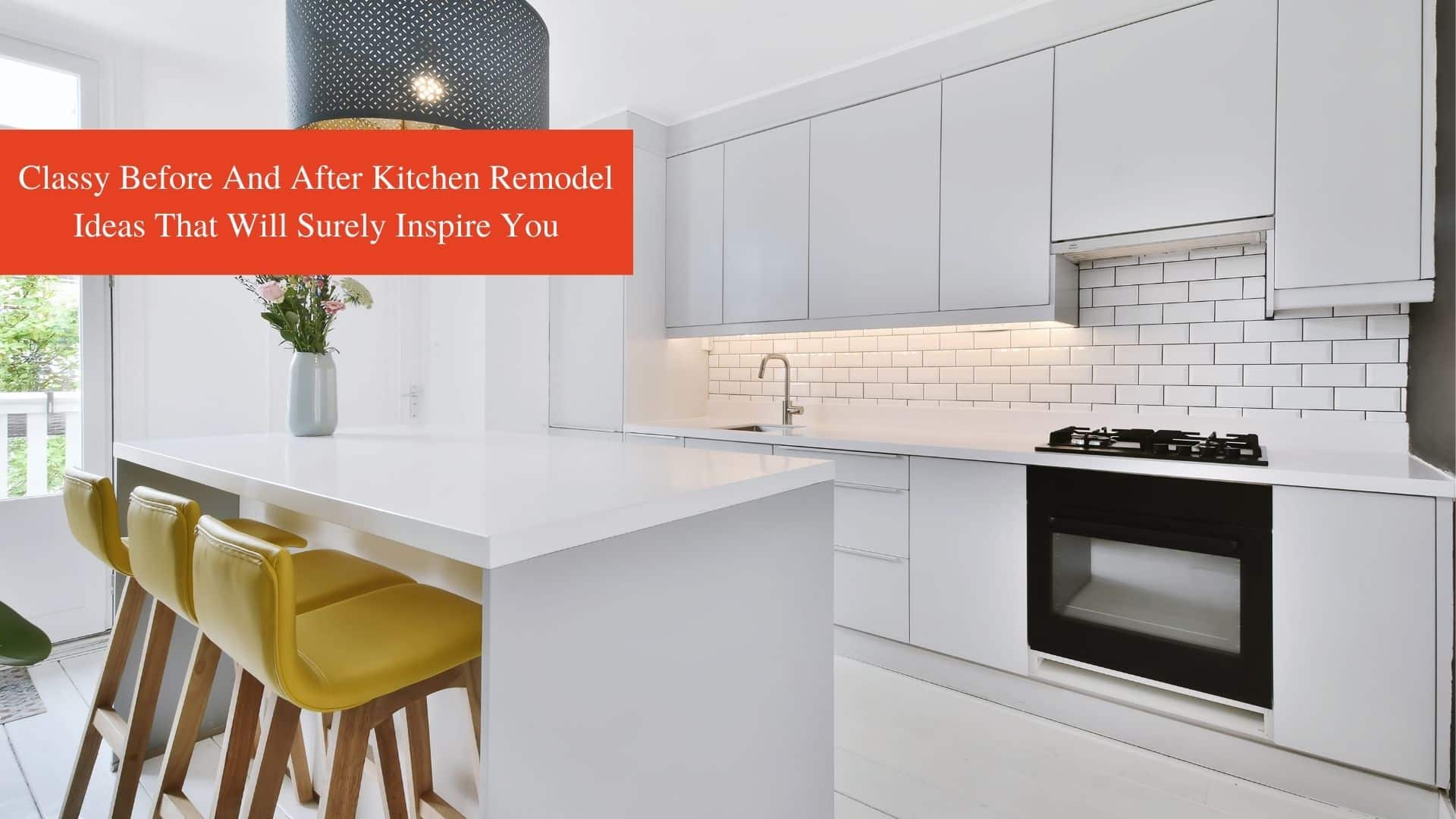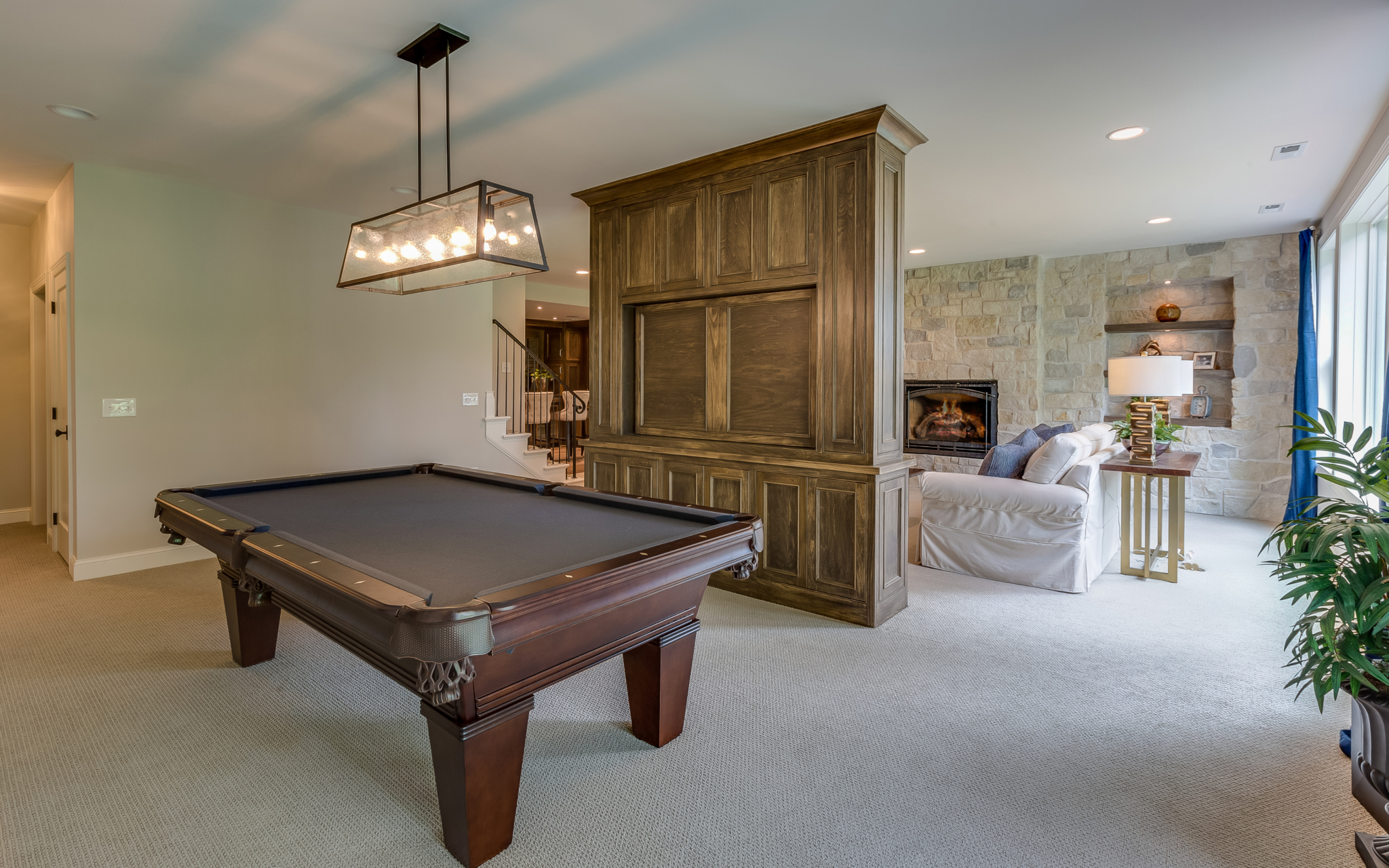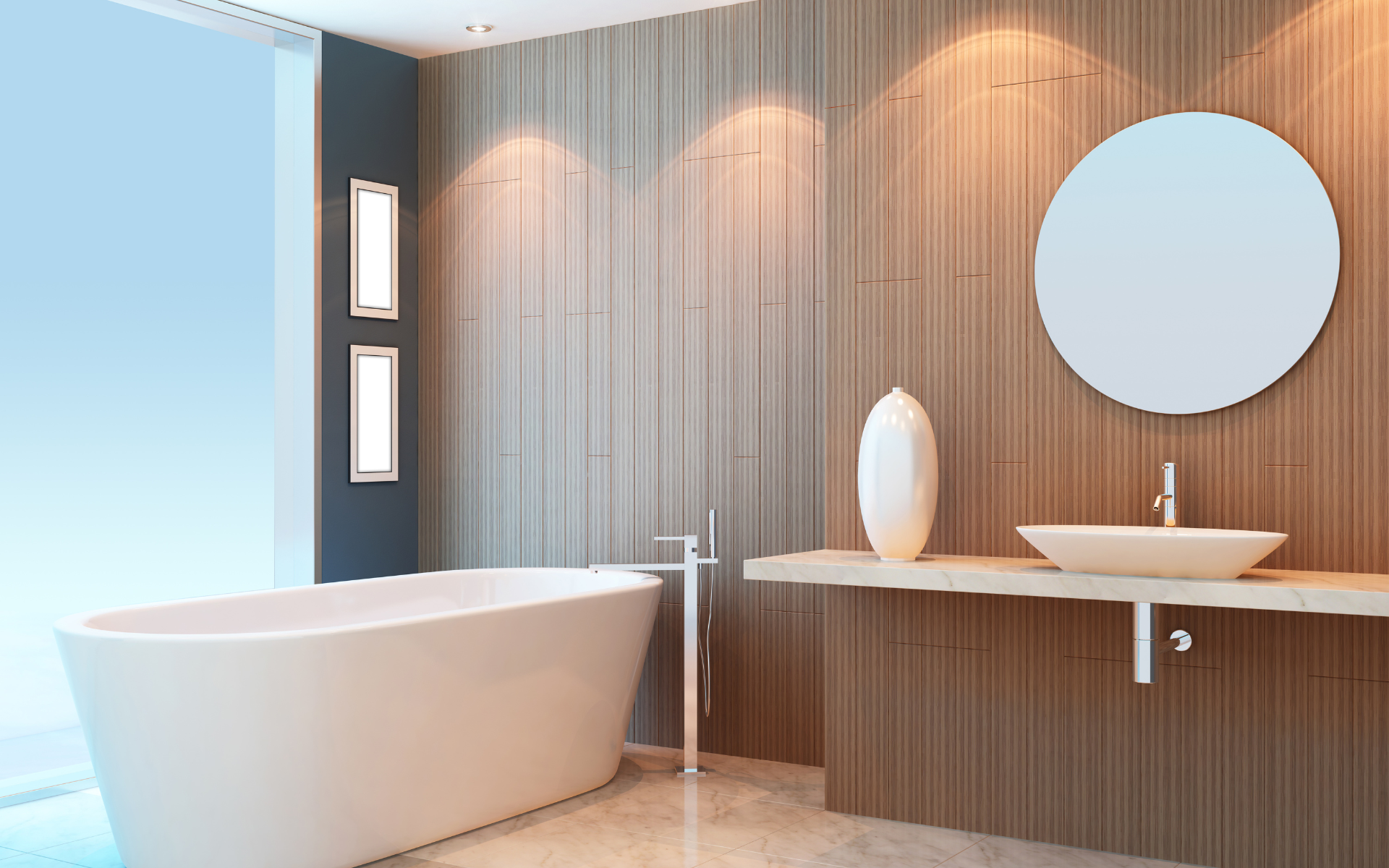Seeing kitchen remodeling before-after transformations gives you incredible inspiration to start your kitchen remodel project. When you see the entire process through kitchen remodeling before and after photos, you understand that no matter what your kitchen looks like now, you have the potential to create something amazing that fits your style.
When you see before-and-after kitchen remodeling photos, you gain insights into how a remodeling company addresses common problems and creates beautiful spaces. According to the latest data, homeowners recoup approximately 65-75% of their kitchen remodel costs at resale, making these projects both personally rewarding and financially smart. The national average ROI is around 54% for major kitchen remodeling projects, while smaller projects can climb up to 81%.
Here we present ten kitchen before and after makeover ideas from our expert kitchen remodeling service. We examine these kitchen remodeling before and after images with a designer’s eye to show you what works best for your project.
Table of Contents
1. Wasted Space Gets Maximized
Before: Outdated Kitchen with Poor Function
This kitchen had good bones but terrible execution. The original cabinets looked tired and outdated. Fluorescent lighting cast harsh shadows across the workspace. Counter space was limited, and storage felt insufficient for a growing family’s needs.
The existing kitchen layout included a functional island positioned correctly to avoid blocking traffic flow. However, the space felt cramped and uninviting. The hardwood floors were beautiful but got lost among all the dated elements.
After: Big Impact from Small Changes
We kept the kitchen’s footprint but made strategic changes that transformed the entire space. The subway tile backsplash adds visual depth and creates a focal point that draws the eye upward. This simple addition makes the room feel significantly larger without adding square footage.
Moving the refrigerator to what was previously a dead wall created valuable counter space near the prep area. The new island design includes an extended overhang that accommodates bar stools, creating a breakfast bar for quick meals and homework time.
We replaced the fluorescent fixture with pendant lights that provide better task lighting while adding style. The neutral tones of the new backsplash complement the existing hardwood floors, creating visual harmony throughout the space.
2. Dark Kitchens Get Brightened
Before: Cramped Layout with Poor Lighting
This kitchen suffered from poor natural light and a cramped layout. The original location of the sink created a bottleneck between the stove and dishwasher. Dark cabinets absorbed what little light entered through small windows. The awkward layout made cooking feel like an obstacle course.
The cabinet color worked against the homeowners, making the space feel smaller and less welcoming. Storage was adequate but poorly organized. The breakfast area felt disconnected from the main cooking space.
After: Light and Bright Open Design
We relocated the sink to a new island, creating a more efficient layout. This change opened up the exterior wall for additional counter space and improved the flow between work zones. The island now serves multiple functions: prep space, cleanup station, and casual dining area.
White cabinets reflect light throughout the room, making it feel twice as large. We added large windows where possible to bring in more natural light. The new layout creates better access between the refrigerator, sink, and stove – the classic work triangle that makes cooking more efficient.
Stainless steel appliances complement the modern style while providing professional-grade performance. The marble countertop on the island serves as a stunning focal point while offering an ideal surface for baking and food preparation.
3. Awful Mistakes Get Erased
Before: Confused Design with Clashing Elements
This kitchen looked like several different design ideas got mixed together poorly. The dark wood cabinets clashed with the beautiful hardwood floors. A bizarre multi-colored wall above the upper cabinets created visual chaos and reflected light in unflattering ways.
The original cabinets were crowded into one corner, making the space feel cramped despite adequate square footage. The breakfast nook felt disconnected from the main kitchen. Storage space was limited, and the layout made meal preparation feel like a chore.
After: New Kitchen Design Shines
We gutted everything except the gorgeous hardwood floors. White cabinetry creates a clean backdrop that lets the flooring shine. Brass hardware adds warmth and elegance without overwhelming the space.
The new layout includes a large island that provides additional storage and prep space. We extended the cabinets along the entire wall, maximizing storage while maintaining visual balance. The stone backsplash matches the quartz countertops, creating a cohesive look that feels both luxurious and practical.
Open shelving on one section of the upper cabinets provides display space for dishes and decorative items while maintaining the airy feel. The coffee bar area includes specialized storage for mugs, coffee makers, and supplies.
4. Outdated Kitchens Get Second Chances
Before: 1980s Design Feels Disconnected
This Silver Spring kitchen was stuck in the 1980s. The cabinet fronts were showing their age, and the layout didn’t reflect how modern families use their kitchens. The family room felt separated from the cooking space, making it difficult for parents to supervise children while preparing meals.
The original kitchen lacked the open concept flow that today’s homeowners expect. Counter space was limited, and the breakfast area felt like an afterthought rather than an integral part of the design.
After: No Walls, More Connection
We opened the wall between the kitchen and family room, creating one large, connected space. The new island serves multiple purposes: extra storage, prep space, and a breakfast bar for casual dining. Large windows flood the space with natural light throughout the day.
The dining table area now flows seamlessly from the kitchen, making entertaining much easier. New appliances provide modern functionality while maintaining the warmth of a family home. The tile backsplash adds texture and interest without competing with other design elements.
We worked closely with the homeowners to understand their daily routines and designed storage solutions that support their lifestyle. The pantry organization system keeps frequently used items accessible while hiding clutter.
5. Small Kitchens Feel Bigger
Before: Poor Proportions Create Cramped Feeling
This kitchen suffered from poor proportions that made it feel smaller than its actual dimensions. The upper cabinets sat too close to the countertops, creating a cramped feeling. The plain wall behind the workspace did nothing to create visual interest or depth.
The cabinet quality was poor, which made the entire kitchen look cheap despite other nice elements in the room. The space needed better organization and more breathing room between elements.
After: Visual Tricks Create Spacious Feel
We used texture strategically to create visual separation between the countertops and cabinets. While the cabinet height remained the same, the new tile backsplash creates the illusion of more space between surfaces.
Gray shaker cabinets provide a sophisticated look while maintaining the light, airy feel the homeowners wanted. The stone gray tile floors complement the cabinet color and create visual continuity throughout the space. Chrome hardware catches the light from new fixtures, adding sparkle and interest.
The new layout maximizes every inch of available space while maintaining an open, uncluttered appearance. Smart storage solutions keep countertops clear, which makes the space feel larger and more organized.
6. Vintage Homes Get Fresh Kitchens
Before: Historic Design Feels Outdated
This Annapolis historic home had a kitchen that honored the past but ignored modern living needs. The original cabinets were beautiful but provided inadequate storage for contemporary families. The layout reflected older cooking styles that didn’t accommodate modern appliances or workflow patterns.
The historical significance of the home required careful attention to maintaining architectural integrity while improving function. The challenge was creating a modern, efficient kitchen that respected the home’s character.
After: Old Meets New Perfectly
We preserved original architectural details while updating everything else. The new cabinetry mimics the style of period pieces but includes modern conveniences like soft-close doors and full-extension drawers. The floor plan maintains the room’s proportions while improving traffic flow.
A large island provides the workspace and storage that the original design lacked. We selected materials that feel appropriate to the home’s era while offering contemporary performance. The breakfast nook fits perfectly into an existing alcove, making efficient use of every square foot.
The welcoming space now accommodates both daily family life and formal entertaining. Modern appliances hide behind cabinet panels to maintain the historic aesthetic while providing contemporary performance.
7. Galley Kitchens Get Opened Up
Before: Narrow Corridor Feels Confining
This galley kitchen felt like a narrow corridor rather than the heart of the home. Two parallel walls of cabinets created a tight workspace with limited room for multiple people. The dining room felt completely separate from food preparation areas.
The original layout made entertaining difficult and isolated the cook from family activities. Storage was adequate but poorly organized, making it hard to find needed items quickly.
After: Open Design Connects Rooms
We removed one wall of upper cabinets and replaced them with open shelving, creating visual connection to the dining area beyond. The remaining cabinets provide ample storage while the open elements prevent the space from feeling enclosed.
A peninsula replaces part of the original cabinetry, creating additional counter space and a natural transition between kitchen and dining areas. The breakfast bar accommodates casual dining and provides a place for guests to gather during meal preparation.
Natural light from the dining room windows now reaches into the kitchen workspace. The open layout allows conversation to flow freely between areas, making the cook part of family activities rather than isolated from them.
8. Plain Kitchens Get Personality
Before: Boring and Basic
This kitchen represented typical builder-grade design: functional but uninspiring. Basic cabinets, standard appliances, and minimal personality characterized the space. The family wanted a kitchen that reflected their style while improving day-to-day functionality.
The existing layout worked adequately but offered no special features or storage solutions. The space felt generic and failed to create the warm, inviting atmosphere the homeowners desired for their family gatherings.
After: High-End Feel on Budget
We kept the basic layout but upgraded every surface and fixture. Custom cabinets provide superior storage with specialized organizers for dishes, pantry items, and cooking tools. The new island includes a prep sink and specialized storage for baking supplies.
Quartz countertops offer durability and beauty while requiring minimal maintenance. The tile backsplash creates visual interest and protects walls from cooking splashes. Professional-grade appliances provide restaurant-quality performance for serious home cooks.
The lighting design includes under-cabinet strips, pendant lights over the island, and recessed fixtures for general illumination. Each type serves a specific purpose while contributing to the overall ambiance.
9. Closed Kitchens Get Opened
Before: Isolated Space Cuts Off Connection
This kitchen was completely walled off from the rest of the home. The cook felt isolated during meal preparation, unable to supervise children or participate in conversations. The separate dining room rarely got used because it felt disconnected from daily activities.
The kitchen itself functioned well but felt cramped because of the enclosed layout. Natural light was limited, and the space felt darker than necessary.
After: Open Floor Plan Creates Family Hub
We removed the wall between kitchen and dining room, creating one large, multi-functional space. A large island defines the kitchen area while providing additional workspace and storage. The dining table now sits adjacent to the kitchen, making meal service effortless.
Large windows in the former dining room now bring light into the kitchen workspace. The open space feels twice as large while maintaining distinct areas for cooking and dining. The breakfast area provides casual dining options for busy weekday mornings.
The new layout accommodates everything the family needs: formal dining for special occasions, casual meals at the island, and comfortable workspace for meal preparation. Multiple people work in the kitchen simultaneously without crowding.
10. Dysfunctional Layouts Get Fixed
Before: Everything in Wrong Places
This kitchen had everything in the wrong place. The refrigerator blocked cabinet access. The sink sat too far from the stove for efficient cooking. The dishwasher location created traffic jams during cleanup. Despite adequate square footage, the space felt cramped and frustrating to use.
The cabinet layout provided plenty of storage but in inconvenient locations. Frequently used items were stored in hard-to-reach places while prime real estate went unused.
After: Smart Layout Creates Efficiency
We completely reconfigured the layout to create an efficient work triangle. The sink, stove, and refrigerator now occupy positions that make cooking and cleanup effortless. The new island provides prep space exactly where needed most.
Smart storage solutions put everything in logical locations. Dishes sit near the dishwasher. Cooking utensils store adjacent to the stove. The pantry organization system groups similar items together for easy access.
The breakfast bar provides casual dining without interfering with cooking activities. Multiple work zones allow several family members to use the space simultaneously during busy meal times.
Partner with Kitchen Remodeling Experts
These transformations show what’s possible when you work with experienced professionals who understand both design and function. Each project started with careful analysis of how the family uses their space, what problems needed solving, and what dreams they wanted to achieve.
At Mega Kitchen and Bath, we guide homeowners through every step of the renovation process. Our design team creates detailed plans that address your specific needs while respecting your budget and timeline. We handle permits, coordinate trades, and ensure quality control throughout construction.
The transformation process typically takes 6-8 weeks for complete renovations, though simpler updates can be completed more quickly. We provide detailed timelines and communicate regularly throughout construction to minimize disruption to your daily routine.
Every successful kitchen remodel combines beautiful design with practical function. The most stunning spaces are also the most livable, supporting your family’s activities while creating an environment you’re proud to share with friends and guests.



